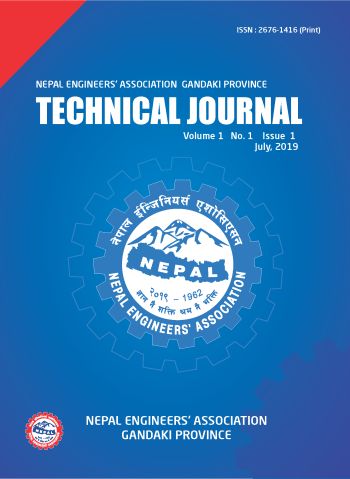Surface Water Quality Assessment Using Remote Sensing, Gis and Artificial Intelligence
DOI:
https://doi.org/10.3126/tj.v1i1.27709Keywords:
Artificial Intelligence (I), GPS, Landsat8, optical and non-optical SWQPs, Remote Sensing, RegressionAbstract
The deterioration of surface water quality occurs due to the presence of various types of pollutants from human activities such as agriculture, industry, construction, deforestation, etc. Thus, the presence of various pollutants in water bodies can lead to deterioration of both surface water quality and aquatic life. Conventional surface water quality assessment methods are widely performed using laboratory analysis, which are labour intensive, costly, and time consuming. Moreover, these methods can only provide individual concentration of surface water quality parameters (SWQPs), measured at monitoring stations and shown in a discrete point format, which are difficult for decision-makers to understand without providing the overall patterns of surface water quality. To such problem, Remote Sensing has been a blessing because of its low cost, spatial continuity and temporal consistency. The relationship between SWQPs and satellite data is complex to be modelled accurately by using regression-based methods. Therefore, our study attempts to develop an artificial intelligence modelling method for mapping concentrations of both optical and non-optical SWQPs.
This study aims to develop techniques for estimating the concentration of both optical and non-optical SWQPs from Satellite Imagery (Landsat8) which supports coastal studies and mapping the complex relationship between satellite multi-spectral signature and concentration of SWQPs. It will also focus on classifying the most significant SWQPs that contribute to both spatial and temporal surface water quality. In contrast to traditionally performed surface water quality assessment methods, this research project will be focused on identifying such parameters incorporating the new and evolving machine intelligence that is Artificial Intelligence (AI). Significant number of samples have to be collected along with the GPS data which is used to model the relationship. In this context, a remote-sensing framework based on the back-propagation neural network (BPNN) will be developed to quantify concentrations of different SWQPs from the Landsat8 satellite imagery. The study area chosen for this research is Bijayapur River of distance approximately 10 km flowing above, through and down the Pokhara city. The sole purpose of this research is to examine the water quality before it flows through the city and analysing after it passes through the city.
Downloads
Downloads
Published
How to Cite
Issue
Section
License
© Technical Journal
Authors are required to transfer their copyright to the journal.




